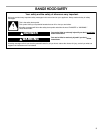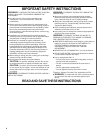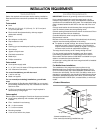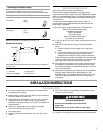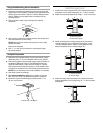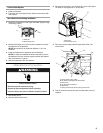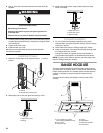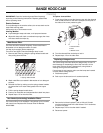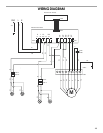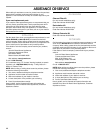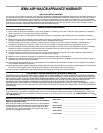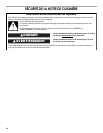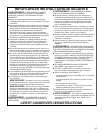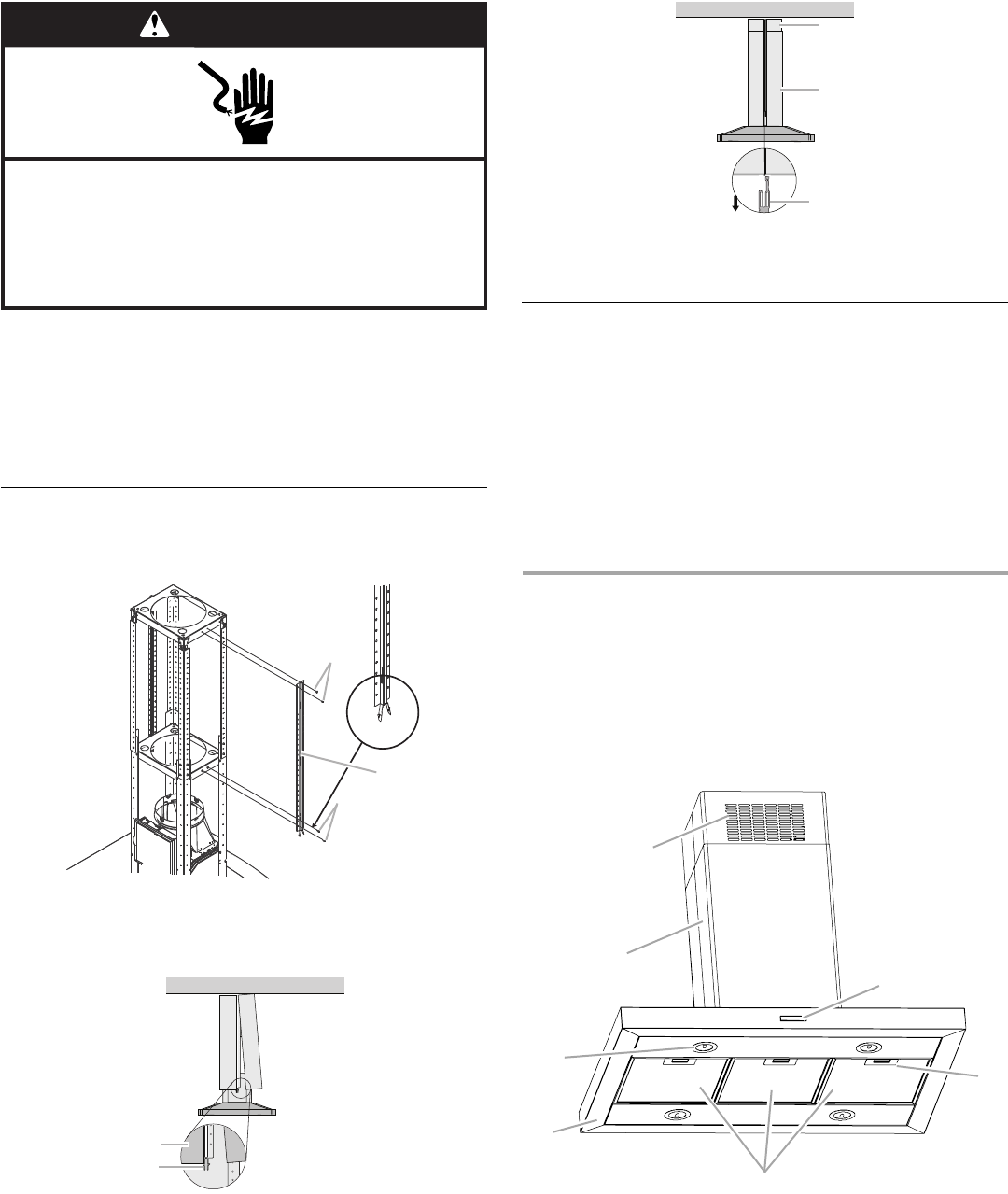
10
6. Use UL listed wire connectors and connect white wires (E)
together.
7. Connect green (or bare) ground wire from home power supply
to yellow-green ground wire (E) in terminal box using UL listed
wire connectors.
8. Tighten strain relief screw.
9. Install terminal box cover.
10. Check that all light bulbs are secure in their sockets.
11. Reconnect power.
Install Duct Covers
1. Attach the vertical duct cover supports using 4 - 4 x 8 mm
screws.
2. Slide upper duct covers into place until springs “click.”
3. Attach lower duct covers using a plastic bracket at each
corner (4 needed).
Complete Installation
1. For non-vented (recirculating) installations only, install
charcoal filters over grille on blower housing. See the “Range
Hood Care” section.
2. Install metal filters. See the “Range Hood Care” section.
3. Check the operation of the range hood blower and light. See
the “Range Hood Use” section.
If range hood does not operate, check to see whether a
circuit breaker has tripped or a household fuse has blown.
NOTE: To get the most efficient use from your new range hood,
read the “Range Hood Use” section.
RANGE HOOD USE
The range hood is designed to remove smoke, cooking vapors
and odors from the cooktop area. For best results, start the hood
before cooking and allow it to operate several minutes after the
cooking is complete to clear all smoke and odors from the
kitchen.
The range hood controls are located on the front side of the
canopy.
A.Screws
B.Vertical duct cover support
A. Upper duct cover
B. Spring
WARNING
Electrical Shock Hazard
Electrically ground blower.
Connect ground wire to green and yellow ground wire
in terminal box.
Failure to do so can result in death or electrical shock.
B
A
A
B
A
A. Upper duct cover
B.Lower duct cover
C.Plastic bracket
A.Louver holes (non-vented
[recirculating] installations only)
B.Duct covers
C.Lamp housings
D.Canopy
E.Grease filters
F. Grease filter handles
G.Control panel
A
B
C
A
B
C
D
E
F
G




